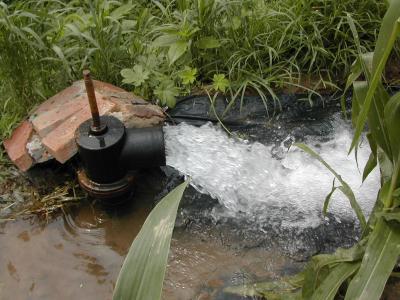Like everywhere, water usage has gone up in China with the surge in population. Groundwater used for crop irrigation in China has grown from 10 billion cubic meters in 1950 to more than 100 billion today. The pumping systems which support this immense irrigation network annually produce 33.1 MtCO2e (33.1 mega tonnes of carbon dioxide equivalent), claims a new study.
How do they know? You can't even count the people in China because by the time you finish counting, the number has changed a lot so counting water is just as hard. They used survey data collected from 366 villages in 11 provinces and then up-scaled those results to calculate the emissions created by groundwater pumping across China's remaining 20 provinces.
China is the largest greenhouse gas emitter in the world, with around 17 percent of emissions coming from agriculture. Irrigated agriculture in China produces 70 per cent of the country's grain and the pollution is caused by the huge amount of energy needed to pump water from underground – in some areas from an average depth of 70 meters.
The results account for more than 0.5 per cent of China's total CO2 emissions - which doesn't sound like much but in context that is the total amount of CO2 all of New Zealand emits in one year.

Credit: Jinxia Wang, Centre for Chinese Agricultural Policy (CCAP)
With a growing population, climate change and socio-economic transition, the report predicts the problem will worsen unless action is taken to improve China's water management policies.
Prof Jinxia Wang of the Centre for Chinese Agricultural Policy said, "Improved access to pumping technology, cheap energy and the ability to directly control water availability has led to a massive expansion of groundwater pumping across large parts of Asia, particularly in China and India. The small scale of pump operations makes regulation and control of use extremely difficult."
Published in Environmental Research Letters.






Comments